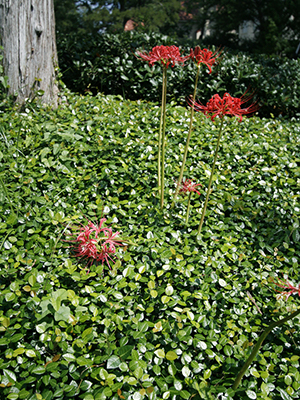Alternatives to Turfgrass

A lush lawn can be an appealing element in the home landscape and provides many important benefits, like reducing stormwater runoff and cleaning the air. But sometimes turfgrass doesn’t perform as well as you would like.
The desire for an attractive lawn is nothing new. Stemming back to the 1800’s, short-cut lawns were a sign of wealth in Europe and gradually made their way to the United States. No longer a status symbol, turfgrass lawns are the norm today, and for years have been the most popular yard coverage in Florida.
But a spacious lawn is not always the practical choice. For the best looking turfgrass, adequate amounts of water and fertilizer are required. Most homeowners want an appealing landscape, and there are other options besides turfgrass that provide equal beauty. And many of these alternatives don’t require difficult maintenance and unnecessary expenses.
Reducing the size of your lawn is one option. Turf in areas with heavy shade and substantial foot traffic can be replaced with alternatives such as shade-tolerant groundcovers or mulch.
Low-growing plants are a popular substitution for turfgrass in selected areas. Popular groundcovers include sunshine mimosa, asiatic jasmine, and perennial peanut. These plants are usually drought tolerant and need minimal fertilizer to keep them looking their best.
Decorative mulched beds can be placed in hard-to-mow and hard-to-grow areas. Common mulch options include pine bark, pine straw, and recycled municipal mulch. When accented with small amounts of turf grass, mulched areas can be very pleasing to the eye.
High-traffic areas can be replaced with sidewalks and outdoor patios. These additions can accent the home nicely and create more living space. Patio and walkway designs can vary greatly and can be constructed to fit the each home’s needs and design. Whenever possible, choose porous materials to help prevent runoff.
In sunny places where turfgrass would thrive, bahiagrass is a good option. Bahiagrass is drought resistant, and may require less pest management.
Some communities have certain lawn care standards, so check your neighborhood’s landscaping restrictions before considering one of these options. Decreasing your amount of turfgrass will reduce your lawn care costs, as well as saving you time and essential energy.
